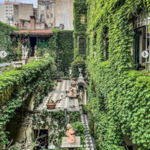M&F
Things To Do
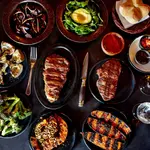
Don Julio (best steakhouse)
Don Julio is a traditional steakhouse showing diners what the real Argentinian asado is all about. The restaurant won an award for The Best Restaurant in Latin America in December 2020 and is listed in the World’s 50 Best Restaurants. Besides the speciality steaks, Don Julio proudly owns an extensive range of top-quality wines.
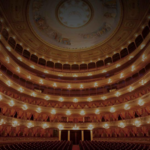
Teatro Colón
Considered one of the best opera houses in the world, Teatro Colón offers a wide variety of outstanding performances, including opera, ballet, classical music by Philharmonic Orchestra of Buenos Aires, and many more. The original Teatro Colón opened in 1857, but closed towards the end of the century, when it was rebuilt in its current form, reopening its doors in 1908.
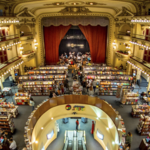
El Ateneo Grand Splendid: Bookstore and Cafe
You’ve entered the Ateneo Grand Splendid bookstore, which blogs and guidebooks often dub “one of the world’s most beautiful bookstores.” The sprawling shop is housed in a beautifully preserved antique theater. The café is actually set on the theater’s former stage, so you can imagine your name in lights as you tuck into a pastry. The building opened as a theater in 1919, when Buenos Aires was booming as a major port and center of commerce. A flood of recent immigrants, particularly from Europe, helped fuel a rich cultural and arts scene, including the birth of tango.
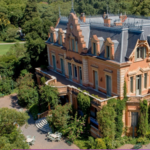
Villa Ocampo: Museum, Café and Bistro
Located 7 minutes by uber from Sans Souci towards the city. The mansion was built in 1891 by the family of the writer Victoria Ocampo with a mix Renaissance, Victorian and neoclassical style. Later donated by her to the UNESCO. You can do a guided tour of 40 minutes (reservation required: https://www.eventbrite.com.ar/e/visita-guiada-general-a-villa-ocampo-incluye-entrada-tickets-219307924907?aff=ebdsoporgprofile). Before or after the visit you can enjoy the gardens and the Bistro (café or lunch) lead by the Chef Jerome Mathe.
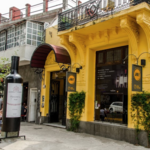
Wine Tasting experience: Lo de Joaquin Alberdi (JA!)
Located in the heart of Palermo, a very hip and happening neighborhood full of fun bars and shops. This a Super fun wine tasting place and wine shop to have a taste of the Argentinian wine.
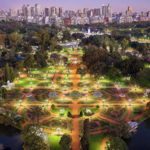
El Rosedal de Palermo (Palermo Rose Garden)
Located within the Palermo neighbourhood, one of the most popular parks in the city, this pretty garden boasts a collection of more than 18,000 roses surrounded by a lake and acres of parkland. The rose garden (rosedal in Spanish) is more than a century old and has received the international Garden Excellence Award from the World Federation of Rose Societies. As well as its roses, it features a lake with a Greek-influenced bridge, an amphitheatre, an Andalusian patio and a poets' garden with 26 busts of famous writers including Alfonsina Storni, Dante Alighieri, William Shakespeare and Jorge Luis Borges.
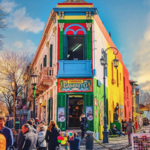
Caminito (Buenos Aires' famously colourful street museum)
Caminito (little path, in Spanish) is a street museum of colorful painted houses typical of the immigrant dwellings that came to characterize this portside area towards the end of the 19th and start of the 20th century. Caminito followed the route of an old stream that once flowed into the Riachuelo, and later, after the river dried up, formed part of a railroad route. After the closure of the railroad, the street was largely abandoned until in the 1950s a group of neighbors decided to regenerate the area and local artist Benito Quinquela Martín began using the tenements as his canvas. Today, there are several works by Argentine artists incorporated as part of the street museum. Several restaurants offer tango and folk dance shows and street fills with artists offering original crafts and paintings. The tenement buildings made of wood and sheet metal are typical of the conventillos, precarious, communal dwellings built by Italian immigrants starting in the late 19th century.
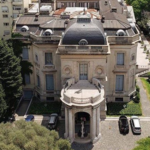
National Museum of Decorative Art (and Croque Madame Café - Restaurant)
Open Tuesday to Sunday, from 1 pm to 7 pm. Entrance is free but it requires previous online registration (click View --> Visit --> "ONLY WITH PRIOR REGISTRATION HERE"). The decoration of this neoclassical palace is testimony to the lifestyle of Argentina's upper classes at the start of the 20th century. The museum's permanent collection features European and oriental furniture, sculptures, porcelain, paintings, tapestries, ranging from the 14th to 20th century, including pieces by El Greco, Corot, Fragonard, Manet, Boudin and Fantin Latour. The building was the residence of society couple Josefina de Alvear and her husband Matías Errázuriz Ortúzar, and was designed in 1911 by noted French architect René Sergent, who specialised in designing private residences in a neoclassical style.
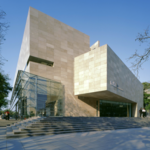
MALBA (Museum of Latin American Art from Buenos Aires)
Open every day - except Tuesday - from 12:00 to 20:00. Buy your ticket online (less than 10 USD) by selecting the day and time of your visit (Click View --> Visit --> Information --> buy Tickets --> General is the type ticket to get, the web will ask your name, last and some ID number that you will carry with you). If you want to know about Latin American Art, this museum contains everything you need to know. The modern building, constructed from limestone, steal and glass, was built in 1997 by the Atelman-Fourcade-Tapia studio, winners of an international competition whose jury comprised celebrated architects Norman Foster, César Pelli and Mario Botta. Highlights of the museum's permanent collection of art include works by Frida Kahlo, Roberto Matta, Diego Rivera, Joaquín Torres-García, Antonio Berni, Jorge de la Vega, Tarsila do Amaral, Pedro Figari, Lygia Clark and Guillermo Kuitca.
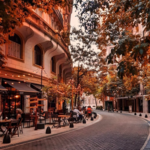
Take a walk in Arroyo Street and visit Floreria Atlántico (hidden cocktail Bar- speakeasy)
Fun little street with a Parisian vive full of bars. If you are lucky, you will find there one of the hidden bars from Buenos Aires, this one disguised as a florist and wine shop. Inspired by the immigrants who flocked to Argentina in the late 1800s and early 1900s, crossing the Atlantic Ocean. Only those attuned to the city’s underground culture know to go to the shop’s rear door (kind of a fridge looking door), which harbors a separate entrance, dividing first-floor blooms and below-ground bubbles. Open from 6-7 pm. Reservations through phone call (+5411) 4313-6093, or WhatsApp (+54911) 5753-2905.
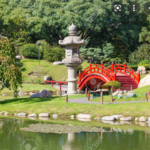
Japanese Garden
Open every day from 10 a.m. to 6:45 p.m. Gated garden that celebrate the Japanese culture, actually the biggest outside of Japan. There is an entrance fee of less than 10 USD (free for kids under 12 years old). There is also a great restaurant inside.
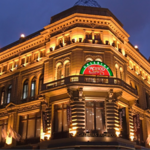
Galerías Pacífico (shopping center & national historic monument)
One of the city’s most opulent shopping centers, located in Florida street, a very popular shopping street of downtown. Many people visit just to see its installations and its dome, which is painted with murals by Argentine artists. Constructed in 1889 to house Au Bon Marché department store but never served this purpose and instead was used as the site of the Fine Arts Museum until 1940. The building was converted into a shopping centre in 1990 and has been declared a national historic monument because of its architectural importance. Audioguide tour (Spanish, English, Portuguese and French) available at the information desk on the ground floor.
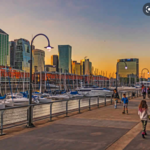
Puerto Madero district
Puerto Madero is the city's regenerated port-side neighborhood, where the modernized redbrick buildings that were once warehouses now host popular restaurants and upscale offices. Just across the docks, gleaming skyscrapers house multinational corporations. To add most contrast to this unique Buenos Aires district, several walking and bicycle trails loop around the wildlife-rich Ecological Reserve, a huge green lung in the middle of the city. What to do in the area: - Walk along the dockside and pick a good restaurant for lunch or dinner - Cross Puerto Madero's Iconic Bridge: Puente de la Mujer ("Woman's Bridge”) - Go for a stroll at Costanera Sur Ecological Reserve. Location entrances: Calle Padre M. L. Migone y Av. Achával Rodríguez // Calle Mariquita Sánchez de Thompson y Av. Giralt - Treat yourself with a high-end Tango Show (for example, "Rojo Tango", see separate post about it) - More: Click View button
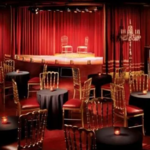
Rojo Tango Show and dinner at El Cabaret (Faena Hotel)
One of the most luxurious and exclusive tango show in Buenos Aires. El Cabaret is an intimate venue inspired by the city’s 1920’s tango clubs. Enjoy a contemporary Argentinean meal, fine wine and craft cocktails while relishing in the sensual and mesmerizing performance of Argentina's most celebrated tango show. The Cabaret lounge was created by the revolutionary French designer Philippe Starck, and it now hosts a dynamic, sensual and intense tango show. The show itself takes you on a journey through the history of the tango, from its roots in Porteño streets to the internationally famous show tango we see today.
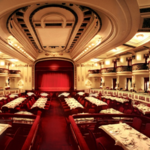
Astor Piazolla Teather (Tango show and dinner)
Piazzolla Tango is located in the "Galleria General Guemes". When entering the theater you will notice the beautiful Art Nouveau style. Piazzolla Tango offers every night the tango show “Four Seasons of Tango” with Astor Piazzolla´s traditional songs. This tango show is best for people that want to have dinner a little bit earlier (for Argentinian standards). The show starts already at 20h30. If you book online you will get 15% discount. Among the options you will find on the webpage, I would recommend taking the "Dinner show Vip", that includes a private box in the theater to have dinner and enjoy the show (very special). They also offer a pre-show short Tango class for an additional price.
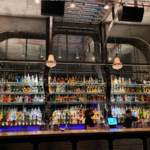
Hidden Bars or Speakeasy (Part 1)
The idea harks back to the prohibition era of the United States. A Speakeasy was a place where illegal alcohol was sold, where the entrance was hidden and you probably needed to know somebody in order to be let in. The cocktail movement started in Buenos Aires 100 years ago. Some bartenders from the United States came to BA during Prohibition to open bars. The Secret Bars of Buenos Aires all take some aspects of a Speakeasy and incorporate them into their essence, whether it be through needing a password to enter or having unmarked doors. A list of some good hidden bars (and addresses): - Florería Atlántico (Arroyo 872 ). Disguised as a florist and wine shop, it has a hidden door inside that take you to the bar. http://floreriaatlantico.com.ar - Uptown & The Bronx (Arévalo 2030). You will find it as a subway entrance on the street (towards NewYork!). Great bar. You only need to book if you want to have dinner there. http://www.uptownba.com. (Continue in Part 2)
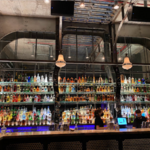
Hidden Bars or Speakeasy (Part 2)
- Frank’s (Arévalo 1443). You will find a black door, usually closed. Ring the bell or knock the door.. You will probably receive a code with your online reservation to give to the gatekeeper and be able to enter the place. Great bar. Book here: https://franks-bar.com. - 878 bar (Thames 878). The entrance is just two big wooden doors with no sign, other than the street address and a doorman. There is actually a secret bar within the secret bar. If you walk all the way back to the end of first bar, there are black doors that lead to the other hidden bar. Reservation only through WhatsApp --> this link: http://bit.ly/34ksMEh - Harrison’s Speakeasy (Malabia 1764). Disguised as an upscale, modern sushi restaurant, Nicky NY Sushi, a member of the wait staff will lead you towards the back, quietly explaining a bit of history about the place and then, voilà you’ll be sitting at a fully-stocked bar. This bar can only be accessed by voice to voice. Ask the sishi bar waiter for directions.
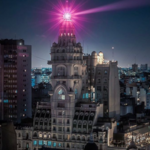
Palacio Barolo
The Barolo Palace is a stunning landmark office building in the Monserrat neighbourhood that hides a number of architectural curiosities. Designed by Italian architect Mario Palanti for the businessman Luigi Barolo with many allegorical architectural references to classical poet Dante Alighieri´s Divine Comedy, including its division into three sections, heaven, hell and purgatory. Palenti also incorporated Indian influences into his design, taking inspiration for the building's dome from Hawa Mahal in Jaipur and Rajarani temple in Bhubaneswar. Guided tour reservation through WhatsApp (+54 9 11 6915 2385). That allows you to go until the top of the palace and have a great view of the city, especially at night! It has a Rooftop Bar (reservations: https://www.reservaonline.support/salon1923/index.html
